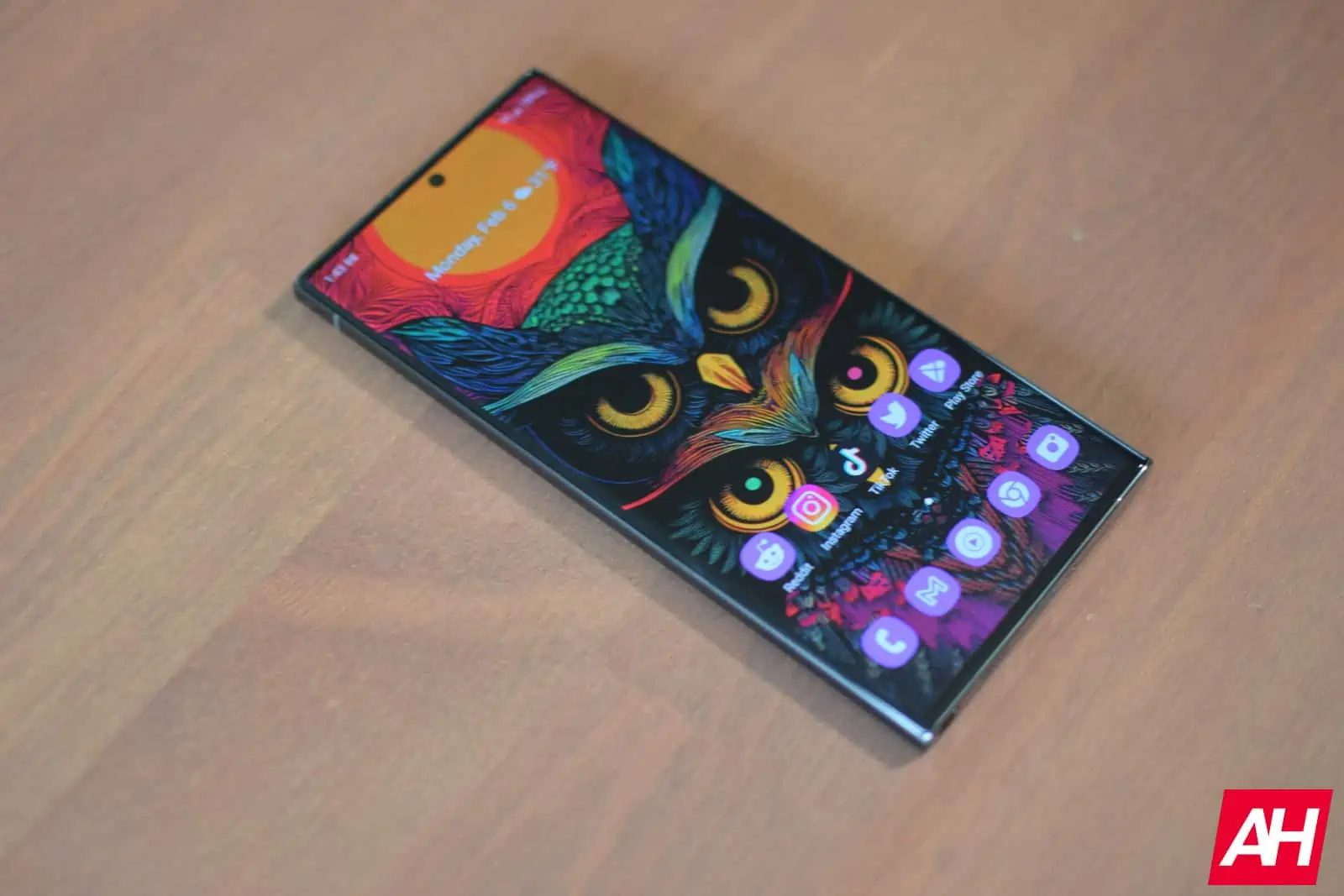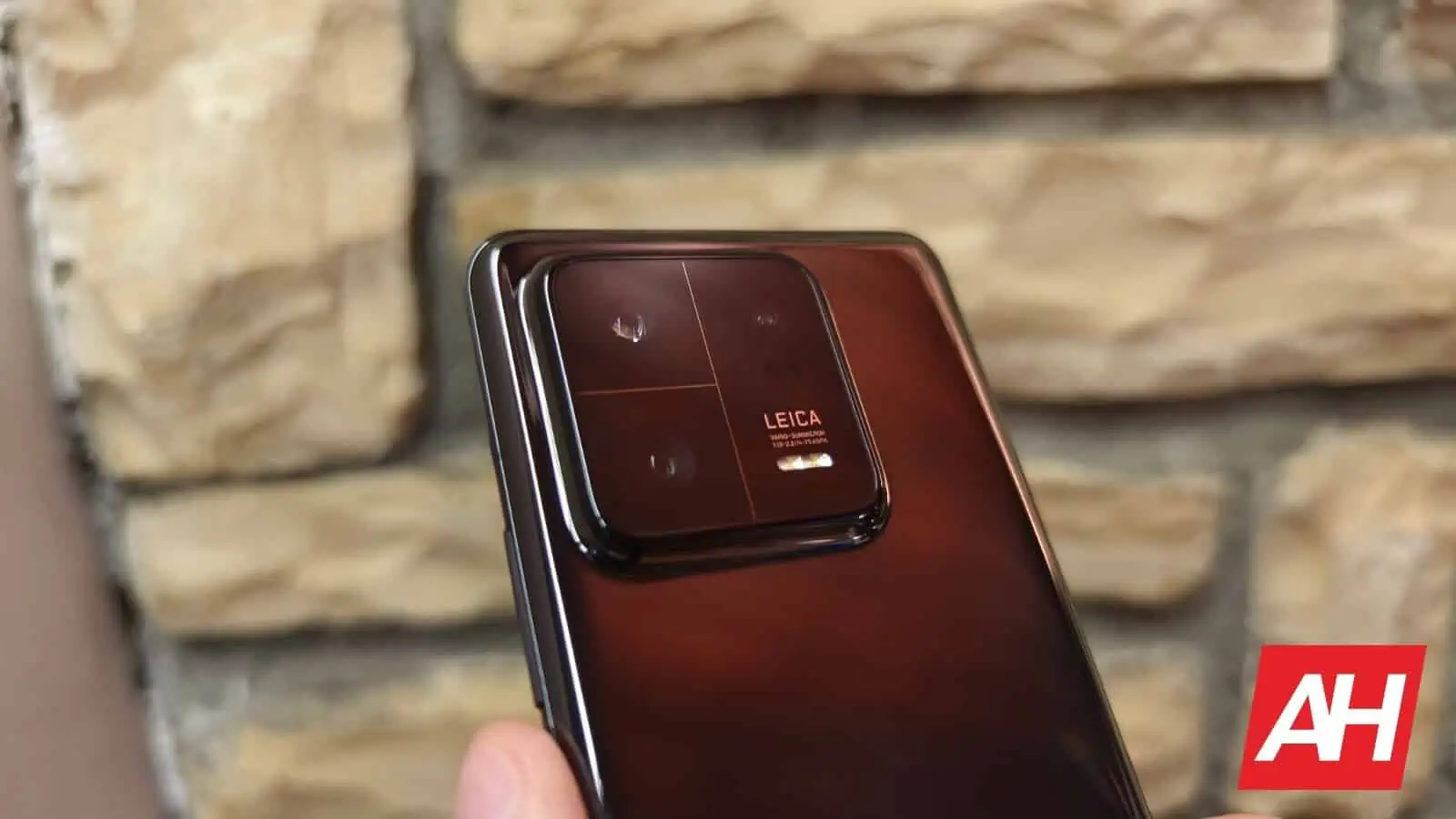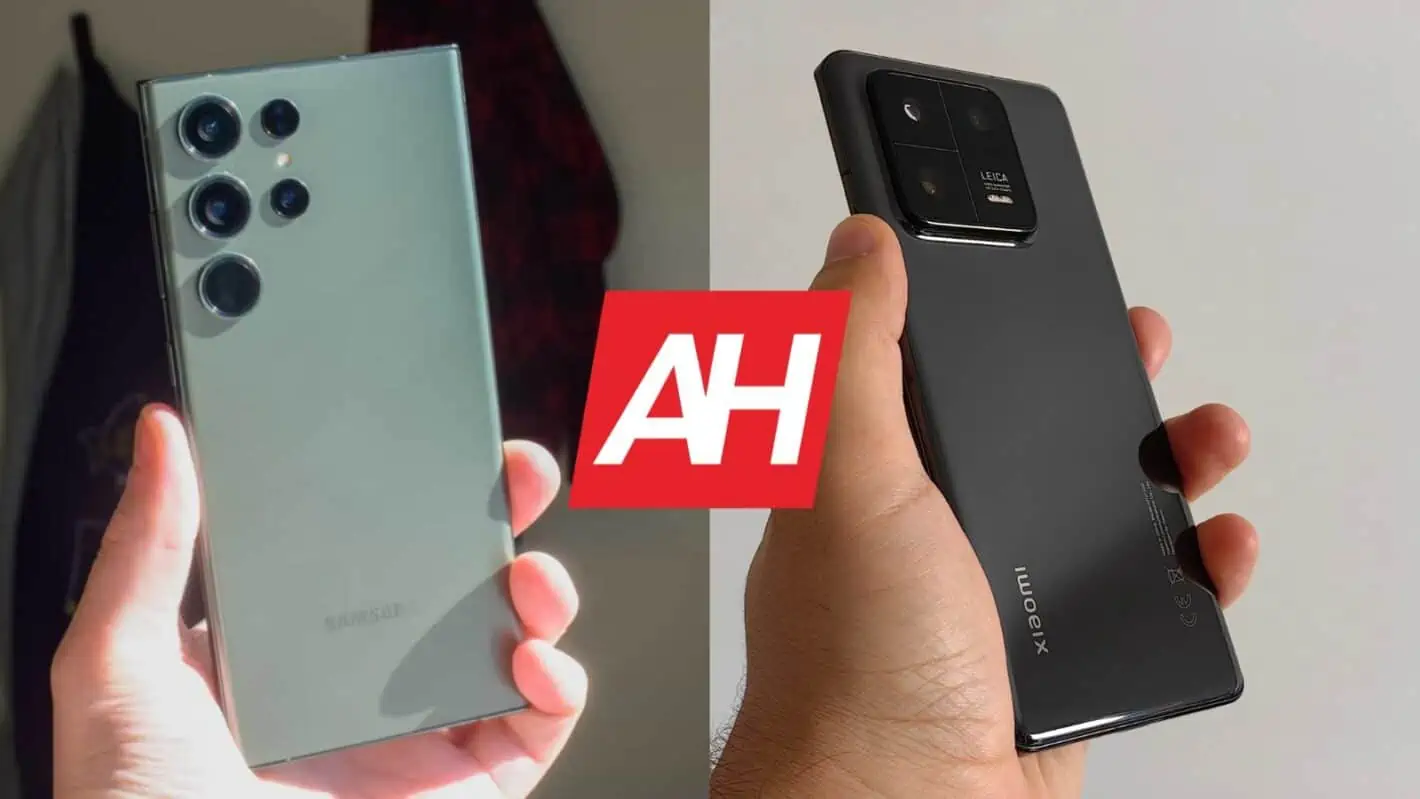The Xiaomi 13 Pro launched globally during the Mobile World Congress 2023. The phone has a truly great camera setup, while Xiaomi also packed truly powerful specs on the inside. Comparing it to the best of Samsung definitely makes sense, for a number of reasons. So, in this article, we’ll compare the Samsung Galaxy S23 Ultra vs Xiaomi 13 Pro. These are two of the most powerful phones Samsung and Xiaomi have to offer at the moment.
The two phones are quite different design-wise, while their software iterations also differ. They do share some of the specs, though, but utilize completely different camera setups. There’s a lot to talk about here, actually. We’ll first list their specifications, and will then move to compare their designs, displays, performance, battery life, and camera performance.
Specs
| Samsung Galaxy S23 Ultra | Xiaomi 13 Pro | |
| Screen size | 6.8-inch QHD+ Dynamic AMOLED 2X display (curved, 120Hz adaptive refresh rate, LTPO, down to 1Hz, 1,750 nits peak brightness) | 6.73-inch QHD+ LTPO AMOLED display (curved, 120Hz adaptive refresh rate, 1,900 nits peak brightness) |
| Screen resolution | 3080 x 1440 | 3200 x 1440 |
| SoC | Qualcomm Snapdragon 8 Gen 2 for Galaxy | Qualcomm Snapdragon 8 Gen 2 |
| RAM | 8GB/12GB (LPDDR5X) | 12GB (LPDDR5X) |
| Storage | 256GB/512GB/1TB, non-expandable (UFS 4.0) | 256GB/512GB, non-expandable (UFS 4.0) |
| Rear cameras | 200MP (f/1.7 aperture, 24mm lens, 0.6um pixel size, multi-directional PDAF, Laser AF, OIS) 12MP (ultrawide, Dual Pixel AF, 120-degree FoV, f/2.2 aperture, 1.4um pixel size) 10MP (telephoto, Dual Pixel AF, OIS, f/2.4 aperture, 1.12um pixel size, 70mm lens, optical zoom 3x) 10MP (telephoto, Dual Pixel AF, OIS, f/4.9 aperture, 1.22um pixel size, 230mm lens, 10x optical zoom, 100x Space Zoom) |
50.3MP (Sony’s IMX989 1-inch sensor, f/1.9 aperture, 1.6um pixel size, Dual Pixel PDAF, OIS) 50MP (ultrawide, f/2.2 aperture, 14mm lens, 115-degree FoV) 50MP (telephoto, 3.2x optical zoom, f/2.0 aperture, PDAF) Leica |
| Front cameras | 12MP (f/2.2 aperture, 26mm lens, Dual Pixel PDAF) | 32MP |
| Battery | 5,000mAh, non-removable, 45W wired charging, 15W Qi wireless charging, 4.5W Wireless PowerShare Charger not included |
4,820mAh, non-removable, 120W wired charging, 50W wireless charging, 10W reverse wireless charging Charger included |
| Dimensions | 163.4 x 78.1 x 8.9mm | 162.9 x 74.6 x 8.7mm |
| Weight | 234 grams | 229 grams |
| Connectivity | 5G, LTE, NFC, Bluetooth 5.3, Wi-Fi, USB Type-C | 5G, LTE, NFC, Bluetooth 5.3, Wi-Fi, USB Type-C |
| Security | In-display fingerprint scanner (ultrasonic) | In-display fingerprint scanner (optical) |
| OS | Android 13 One UI 5.1 |
Android 13 MIUI 14 |
| Price | $1,199.99/$1,299/$1,399/TBA (1TB) | €1,299/TBA |
| Buy | Samsung | Xiaomi |
Samsung Galaxy S23 Ultra vs Xiaomi 13 Pro: Design
Both of these phones are made out of metal and glass, but they both look different, and feel different in the hand. The Galaxy S23 Ultra has flat top and bottom sides, while its sides are curved with a flattish feeling. It’s difficult to explain. The Xiaomi 13 Pro, on the other hand, has a more familiar design. It has two pieces of glass that curve towards the phone’s frame. Those glass panels on the front and back are only slightly curved towards the sides.
Both phones have a centered display camera hole, and very thin bezels. Both displays are curved, but only barely, neither company opted for a major curvature this time around. If we flip the two phones over, you’ll see entirely different-looking camera setups. The Galaxy S23 Ultra has four cameras on the back, each of which protrude from the backplate directly. The Xiaomi 13 Pro has a camera island in the top-left corner, which includes three cameras, covered by Leica lenses.
The Galaxy S23 Ultra is slightly taller, and considerably wider than the Xiaomi 13 Pro. It’s also slightly thicker. When it comes to thickness, they’re very close if you compare the Galaxy S23 Ultra with the ceramic variant of the Xiaomi 13 Pro, which is the only variant that got released globally. In China, there is a vegan leather model that is a bit lighter. Both phones feel truly premium in the hand, and both are IP68 certified for water and dust resistance. The in-hand feel is different, though, and the Galaxy S23 Ultra feels considerably larger when you hold it.
Samsung Galaxy S23 Ultra vs Xiaomi 13 Pro: Display
Both companies decided to include truly outstanding displays in their flagship devices. The Galaxy S23 Ultra includes a 6.8-inch QHD+ (3088 x 1440) Dynamic AMOLED 2X curved display. It has a 120Hz refresh rate, and supports HDR10+ content. This display gets up to 1,750 nits of peak brightness when needed. It is protected by the Gorilla Glass Victus 2, and it offers a pixel density of 500.

The Xiaomi 13 Pro, on the other hand, has a 6.73-inch QHD+ (3200 x 1440) LTPO AMOLED display. This panel is also curved, and it can project up to 1 billion colors. It has a 120Hz refresh rate and Dolby Vision support. It also supports HDR10+ content, and can get truly bright at 1,900 nits. This display is protected by the Gorilla Glass Victus, and it has a pixel density of 522, in case you were wondering.
These two displays are some of the best in the market, easily. Not only are they truly vivid and offer those deep blacks, but they’re also very sharp. The viewing angles are outstanding, and they are also very fluid. On top of that, they have proper HDR10+ support, and get truly bright. The Xiaomi 13 Pro does technically get slightly brighter, but both are more than enough, even in direct sunlight. You really can’t miss, both displays are outstanding.
Samsung Galaxy S23 Ultra vs Xiaomi 13 Pro: Performance
The Galaxy S23 Ultra is fueled by the Snapdragon 8 Gen 2 for Galaxy SoC, while the Xiaomi 13 Pro comes with the Snapdragon 8 Gen 2. Both phones essentially have the same SoC, but the one in the Samsung phone is clocked a bit higher. In any case, both phones also include LPDDR5X RAM and UFS 4.0 flash storage. The Galaxy S23 Ultra has up to 12GB, while the Xiaomi 13 Pro comes with 12GB of RAM only, globally. Samsung offers up to 1TB of storage, while Xiaomi offers up to 512GB of storage. Both phones also ship with Android 13 out of the box, with their respective skins.
Both of these phones are immensely powerful on paper, there’s no denying that. And yes, that does translate to real-life use as well. These two phones are blazing fast in every way, shape and form. It really doesn’t make a difference what you’re doing on the device, and that even includes gaming. They can play any game from the Play Store without a hitch, at least the ones we tried out were running very smoothly. That even goes for the most demanding titles out there, Genshin Impact ran perfectly fine. Qualcomm made an outstanding SoC, and One UI 5.1 and MIUI 14 are apparently running great on the platform. You really don’t have to worry about performance, at least as things stand at the moment.
Samsung Galaxy S23 Ultra vs Xiaomi 13 Pro: Battery
The Samsung Galaxy S23 Ultra comes with a 5,000mAh battery, while the Xiaomi 13 Pro has a 4,820mAh battery on the inside. That, combined with their software, and the Snapdragon 8 Gen 2, which is excellent in the power consumption segment… delivers great battery life on both phones. Now, in our testing, the Galaxy S23 Ultra can last a bit longer, but the Xiaomi 13 Pro offers excellent battery life as well.
We were able to get up to 9-10 hours of screen-on-time with the Galaxy S23 Ultra, more often than not. If you’re not doing anything power-demanding, it may even go a bit further than that. The Xiaomi 13 Pro, on the other hand, is also able to go the distance. I was ending my days with around 7 hours of screen-on-time during the review, but I had a lot of battery life left. I once pushed it past the 8-hour screen-on-time mark and it was still going. Do note that I don’t really play games on my phones, though, only for testing purposes. So, gaming, and other demanding tasks may show different results. There are also a number of other factors that may affect battery life differently for you, of course.
Now, when it comes to charging, the Xiaomi 13 Pro obliterates the Galaxy S23 Ultra, basically. Not only does it come with a charger unlike the Galaxy S23 Ultra, but it packs in a 120W charger. The Xiaomi 13 Pro supports 120W wired, 50W wireless, and 10W reverse wireless charging. The Galaxy S23 Ultra, on the other hand, offers 45W wired, 15W wireless, and 4.5W reverse wireless charging. The Xiaomi 13 Pro charges considerably faster in all three aspects.
Samsung Galaxy S23 Ultra vs Xiaomi 13 Pro: Cameras
These two devices have immensely different camera setups, and do produce different results too. The Galaxy S23 Ultra comes with a 200-megapixel main camera, a 12-megapixel ultrawide camera (120-degree FoV), a 10-megapixel telephoto unit (3x optical zoom), and a 10-megapixel periscope telephoto camera (10x optical zoom, 100x Space Zoom). The Xiaomi 13 Pro, on the flip side, has a 50.3-megapixel main camera (1-inch sensor), a 50-megapixel ultrawide camera (115-degree FoV), and a 50-megapixel telephoto camera (3.2x optical zoom). Leica lenses are also used on top of all three Xiaomi cameras.

Both phones do excel in the camera department, though neither is perfect. The Galaxy S23 Ultra can produce outstanding shots in all scenarios, when it nails a shot. Samsung still has to work on consistency a bit at this point, but the cameras here produce outstanding results. It is capable of balancing even the most demanding shots. Like the ones at night with plenty of lights and neon signs. It also offers great dynamic range, when it hits it right. The pictures are usually spot on, but at times it can tune up the saturation a bit too high.
The Xiaomi 13 Pro produces a bit moodier shots, which is especially noticeable in ‘Leica Authentic’ mode, and during the night. That’s not a bad thing, as the whole point is for the photos to be a bit more Leica-like. There are also a ton of Leica shooting styles you can choose from. The Xiaomi 13 Pro does a great job overall, except for some HDR situations, it still tends to miss those during both day and night, at times. Well, at least it did during our review, but that is easily fixable. The Xiaomi 13 Pro truly shins in portrait photography with its telephoto camera, it yields outstanding results. Its 1-inch camera produces great shots as well, with creamy bokeh, it really can capture a breathtaking image.
Ultrawide cameras on both phones are really good and keep up the pace with the main shooter. The video recording is also good on both phones, but the Galaxy S23 Ultra does stand out. It offers better stabilization, and the end results usually look a bit better. Both smartphones are truly great in the camera department, though, I cannot emphasize that enough.
Audio
Both smartphones have stereo speakers built-in, and both phones produce really good audio. The audio is more than loud enough, while there’s also some bass in there. The distortion is not noticeable, and they are overall well-balanced.
Having said that, neither of these two phones has an audio jack. You’ll have to use the Type-C ports in case you want to connect your headphones via a wire. If you prefer a wireless connection, there’s always Bluetooth 5.3, which is supported by both phones.

